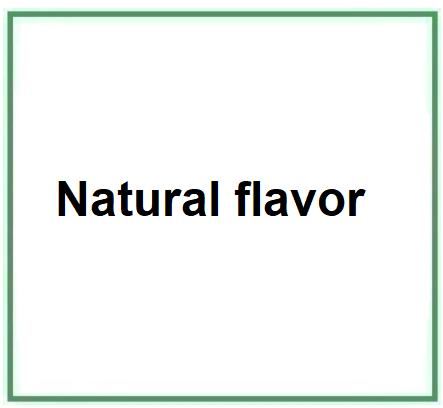Natural and artificial flavors are ingredients commonly used in the food industry to enhance the taste and aroma of products. While natural flavors are derived from plant or animal sources, artificial flavors are synthesized in the laboratory.
Characteristics
- Taste Enhancement. Both are used to enrich or recreate specific tastes and aromas in food products, contributing to making foods and beverages more appealing.
- Versatility. They can be employed in a wide range of products, including snacks, beverages, baked goods, candies, and prepared dishes.
- Cost. Artificial flavors tend to be cheaper and more stable than natural flavors, making them particularly useful in mass-produced products.
- Consistency. Artificial flavors offer a flavor consistency that can be hard to achieve with natural ingredients, especially when seasonal variations affect the availability and characteristics of natural ingredients.
- Sustainability. Natural flavors are often considered more sustainable and eco-friendly, but they may require more resources for production and extraction.
Nutrition
On the nutritional aspect, natural flavors might come from sources that contain additional nutrients, whereas artificial flavors are typically designed to mimic the taste and aroma of natural ingredients without contributing nutritional value. It's worth noting that the primary purpose of both natural and artificial flavors is to enhance taste rather than to provide nutrition. Yet, the broader context of choosing foods that are minimally processed and closer to their natural state can indeed contribute to a more nutritious diet.
Safety
Regarding safety, artificial flavors are indeed subject to rigorous testing before approval for use in food products. However, the concern about allergens in artificial flavors is understandable, as the specific components of an artificial flavor mixture might not always be fully disclosed due to proprietary reasons. This can make it difficult for individuals with allergies to identify potential allergens.
Unlike generic flavourings, which are synthetic, chemical in nature, the term 'natural flavourings' must contain the name of the product(s) they refer to.
Explanation :
- if the diction is "Natural flavour of..." it is a synthetic product, hence chemical, but at least it contains a natural extract of the ingredient to which it refers.
- if the diction is "Flavour" or "Flavouring", it is a chemical component that traces the taste of the ingredient, but has no substance of the ingredient.

EU legislation defines a 'natural flavouring substance' as a flavouring substance obtained by appropriate physical, enzymatic or microbiological processes from material of vegetable, animal or microbiological origin, either in the raw state or after processing for human consumption by one or more of the traditional food preparation processes listed in Annex II. Natural flavouring substances correspond to substances normally present and identified in nature. (1)
Specific provisions for the use of the term 'natural'
- 1. Where the term 'natural' is used to describe a flavouring in the sales description referred to in Article 15(1)(a), the provisions laid down in paragraphs 2 to 6 of this Article shall apply.
- 2. The term 'natural' may only be used to describe a flavouring if the flavouring component contains exclusively flavouring preparations and/or natural flavouring substances.
- 3. The term 'natural flavouring substance' may only be used for flavourings whose flavouring component contains exclusively natural flavouring substances.
- 4. The term 'natural' may only be used in association with a reference to a food, food category or a vegetable or animal flavouring source if the totality or at least 95 % (w/w) of the flavouring component has been obtained from the source material referred to.
- The description shall read: natural flavouring of "food or food category or source material"'.
- 5. The term "natural flavouring of "food or food category or food source material" with other natural flavourings" may only be used if the flavouring component is partially derived from the source material referred to, the flavour of which is easily recognisable.
- 6. The term "natural flavouring" or "natural flavor" may only be used if the flavouring component is derived from different source materials and if a reference to the source materials does not indicate the flavour or taste. (2)
To sum up:
The substances from which "Natural Flavor" is obtained must be 95 percent natural. The remaining 5%?
Different matter is whether they are obtained by chemical or other process. So, in conclusion, perhaps it would be best to avoid flavorings (with any literary extension beside them).
References_____________________________________________________________
(1) Regulation (CE) n. 1334/2008 Art.3 , 2c
https://www.legislation.gov.uk/eur/2008/1334/article/3
(2) Regulation (CE) n. 1334/2008 Art.16
https://www.legislation.gov.uk/eur/2008/1334/article/16
![]() Natural flavor
Natural flavor 


